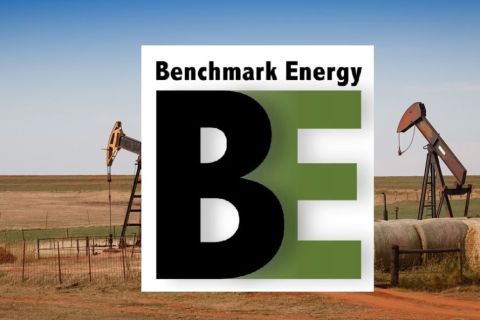
The first Gas Plant in a Bottle™ (GPB™) is scheduled to be installed in south Texas later this year. Developed by Ortloff Engineers Ltd. and SME Products, L.P. to reduce the cost, emissions and plot space necessary for gas processing plants, this new process and equipment design is able to place nearly all of the processing equipment in a typical cryogenic gas plant inside a single vertical tower.
GPB™ utilizes integrated heat and mass transfer (HMT) modules within one processing assembly. This assembly includes the piping, equipment and reboilers and is then connected to an adjoining turbo-expander assembly.
The companies said that the HMT module also helps to improve fractionation since it is incorporated into the stripping section of the fractionation column. This provides external heat input across the entire stripping section to generate stripping vapors which promotes mass transfer contact within the module.
“Among the advantages of this process are lower plant cost, less plot space, less piping, reduced pressure drop with resulting lower compression power, fewer flanged connections reducing the potential sources of leaks and atmospheric emissions, fewer foundations meaning less civil work, and shorter construction schedules,” according to the companies.
Company officials said that while the GPB™ process takes up less space by either changing the location of equipment, or eliminating some equipment that is found in a typical cryogenic processing plant, the process flow paths in both plants are essentially the same. “The key equipment for both plants are the gas/gas heat exchanger, cold separator, turbo-expander, recompressor, demethanizer fractionation column, subcooler, and demethanizer reboilers. For the GPB™ an HMT module replaces the traditional reboilers, thermosiphon piping, and mass transfer stripping section,” Andrew Johnke of SME Products said. The HMT module helps to more evenly distribute the heat input across the entire stripping section, further improving the fractionation efficiency compared to traditional reboilers.
In the GPB™ process, the heat exchange equipment can be located within the pressurized vessel assembly above and below the demethanizer absorber section rather than at grade-level in typical processes. One portion of the inlet feed flows to the feed pass of the gas/gas exchanger near the top of the processing assembly, and the other flows through the HMT module at the base of the demethanizer stripping section.
When relocating the heat exchange equipment to the top of the pressurized assembly, a significant amount of residue gas piping is eliminated. This design modification reduces the pressure drop across the residue gas flow path and reduces the power consumption. “The reduction in power consumption is a result of this lower system pressure drop due to eliminating interconnecting pipe, and the performance efficiency of the HMT module. Residue gas compression power is typically reduced by 5% to 9% when compared to a traditional liquids recovery plant,” according to Scott Miller of Ortloff Engineers.
The GPB™ design arrangement helps companies limit the amount of on-site construction work since the unit is built at an off-site fabrication facility. “All process piping associated with the liquids recovery portion of the gas plant is pre-engineered and pre-fit to minimize on-site field labor,” Johnke said.
The reduction in piping reduces the number of potential emission leaks due to the limited number of flanges. The smaller plot size and pre-fabricated materials also allow the plant to be relocated easily to another site in the future, as well as allowing for less downtime should owners decide to retrofit their current plants to the GPB™ process.
Miller added that the process is capable of incorporating refrigeration internally in the cold separator unit or externally for richer gas streams. The design also allows for an external heating source, such as steam or hot oil, to process at higher product temperatures.
While the reduction in footprint is an obvious benefit of this process, the true benefits lie in the reduced plant CAPEX and OPEX. Ortloff and SME-P officials stated that compared to traditional processing plants, the GPB™ process can reduce power consumption by 6-8%, installation costs by 30-50%, and the footprint size by 30-60%.
When comparing a traditional plant that has a capacity of 200 million standard cubic feet per day (MMcf/d) with a GPB™ plant with the same capacity, Ortloff and SME-P found that the GPB™ plant is the lower cost option and is capable of recovering more liquids while using less power. In their comparison, the companies found that at the same product recovery levels the GPB™ design uses nearly 7% less residue gas compression while lowering the uninstalled cost by approximately $2 million and installation costs by as much as 50%.
The GPB™ product line includes many of Ortloff’s proven process technologies. These process technologies can be adapted to cover a wide range of process feed conditions and offer process options for ethane recovery (GSP-B™ and RSV-B™), propane recovery (SCORE-B™), or the ultimate flexibility to recover or reject ethane with a single process design (SFR-B™ and SRP-B™).
Recommended Reading
EIA: Permian, Bakken Associated Gas Growth Pressures NatGas Producers
2024-04-18 - Near-record associated gas volumes from U.S. oil basins continue to put pressure on dry gas producers, which are curtailing output and cutting rigs.
Benchmark Closes Anadarko Deal, Hunts for More M&A
2024-04-17 - Benchmark Energy II closed a $145 million acquisition of western Anadarko Basin assets—and the company is hunting for more low-decline, mature assets to acquire.
‘Monster’ Gas: Aethon’s 16,000-foot Dive in Haynesville West
2024-04-09 - Aethon Energy’s COO described challenges in the far western Haynesville stepout, while other operators opened their books on the latest in the legacy Haynesville at Hart Energy’s DUG GAS+ Conference and Expo in Shreveport, Louisiana.
Mighty Midland Still Beckons Dealmakers
2024-04-05 - The Midland Basin is the center of U.S. oil drilling activity. But only those with the biggest balance sheets can afford to buy in the basin's core, following a historic consolidation trend.
Mesa III Reloads in Haynesville with Mineral, Royalty Acquisition
2024-04-03 - After Mesa II sold its Haynesville Shale portfolio to Franco-Nevada for $125 million late last year, Mesa Royalties III is jumping back into Louisiana and East Texas, as well as the Permian Basin.





